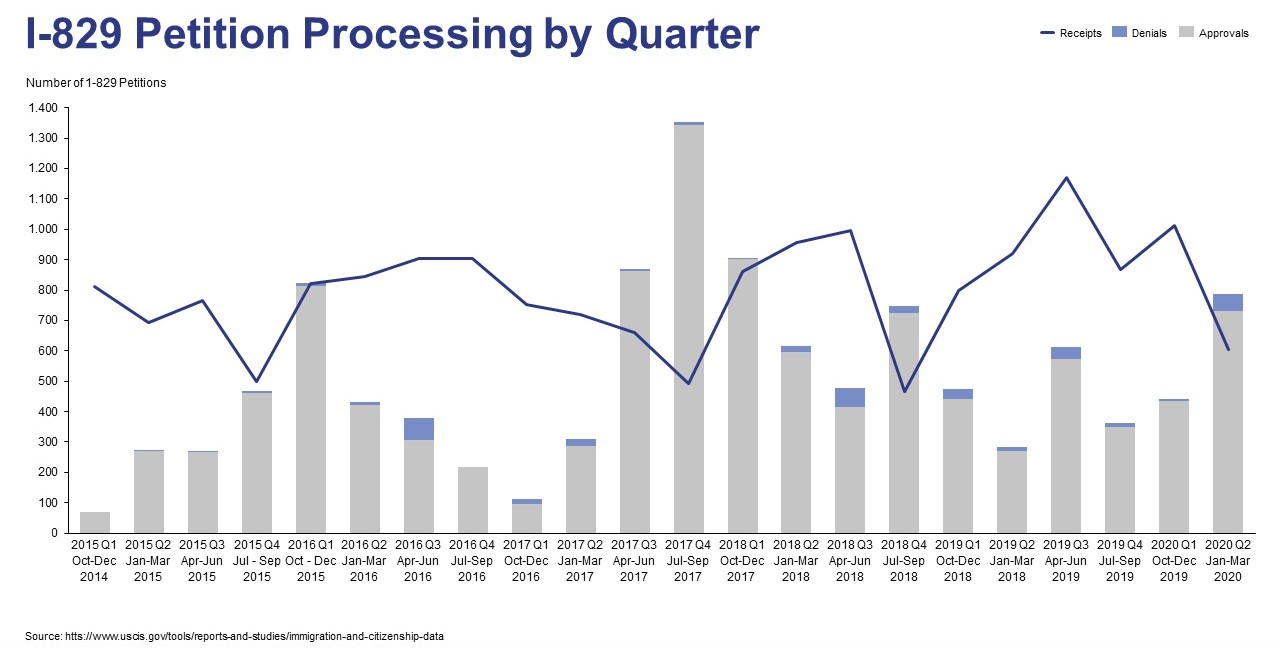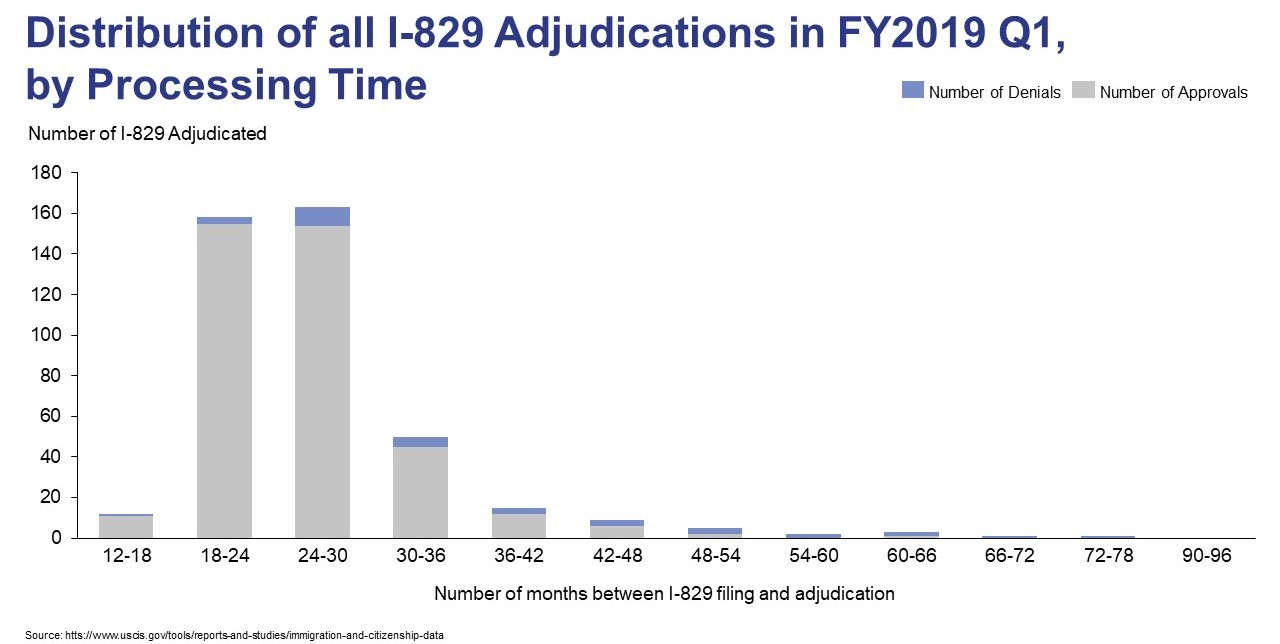Although the EB-5 Immigrant Investor Program is considered to be one of the fastest and easiest ways to permanently immigrate to the United States, it is no secret that the EB-5 journey can be filled with processing delays and unreasonably long wait times. Some EB-5 investors wait up to two years for their I-526 petition to be adjudicated, and investors from backlogged countries often wait even longer. Furthermore, as of November 2020, the processing times for I-829 petitions do not look very promising, either. On the United States Citizenship and Immigration Services (USCIS) Check Case Processing Times page, the estimated processing time range for I-829 petitions is shown as 36.5–234 months (3–19.5 years). The possibility of waiting 20 years for a single petition to be processed can discourage many people involved in an EB-5 investment. But it is important to note that waiting two decades is far from normal.

It’s logical to assume that if this is the estimated processing time range, the majority of I-829 petitions are processed within this time range. However, this is not the case. In fact, 50% of all I-829 petitions are processed by the lower number in the range, and the higher number in the range represents the time by which 93% of petitions have been processed. So, a better understanding of what this range really represents is that 50% of petitions are adjudicated sooner than the range suggests and 43% are adjudicated within the given range, leaving 7% as outliers taking longer than the estimated range.
With a better grasp of how this range is calculated, those making an EB-5 investment can better estimate the wait times they may experience during their adjudication process. Even though these ranges do not reflect the majority of adjudication time ranges, USCIS nonetheless uses the upper number of the range to determine the date for case inquiry. Because the higher number is such an outlier, it pushes the date for case inquiry extremely far back. As of November 13, 2020, the inquiry date for I-829 petitions is May 30, 2001. This means that investors must wait 19 years before they can file a case inquiry about their long wait times, which essentially discourages all I-829 inquiries from those with an EB5 investment.
This is not so different from the I-526 petition processing time ranges. The estimated processing time range for I-526 petitions almost doubled in July 2020, which pushed the date for case inquiry back almost six years. Given that the processing statistics did not reflect these estimated time ranges, it appears as if the change in estimated processing times may have been done to remove any chance for case inquiries.
A More Accurate Processing Time Range
The best way to calculate a realistic estimate for a processing time range is to use the data from previous quarters. There are, of course, many factors that could affect the data in any given quarter, such as temporary closures from a pandemic or the suspension of certain operations at USCIS. Therefore, no calculation will be completely accurate, but it could still offer some insight into processing time ranges. For example, in FY2019 Q1 (October–December 2018), 79% of the I-829 petitions that were adjudicated had been pending for less than 30 months, and many petitions were processed in 18–24 months. However, the estimated processing time range issued in December 2018 was 30–39 months. This demonstrates that the issued estimated time ranges are not always the best reflection of actual wait times.




As previously stated, this data is not a clear depiction of what the processing times will look like in late 2020. The EB-5 program and USCIS have faced many obstacles throughout 2020 that have impacted USCIS’s productivity and funding. Fortunately, although USCIS’s productivity was low in calendar year 2019, it began to increase in FY2020 Q2. If this continues, I-829 petitions may be adjudicated much quicker than the estimated processing time range suggests.
Why has the estimated time range increased so much?
Unfortunately, there is no clear answer as to why the estimated processing time ranges is so long. It is possible that some I-829 petitions from 2002 that were held up due to legal complications are now being processed. From 1995 to 1998, there were several I-526 petitions approved that were later deemed problematic. The Immigration and Naturalization Service (INS)—the immigration body that preceded USCIS—changed certain rules that affected EB-5 eligibility requirements. In 2002, Congress passed Public Law 107-273, which allowed affected EB-5 investors to adjust their EB5 investment so that they could satisfy the new requirements. Then, by 2019, 17 years later, the regulations remained unpublished, despite the law stating they had to be published within 120 days. However, the sudden increase of the estimated processing range times could mean that some of these petitions from 19 years ago are finally now getting processed. It is, of course, also possible that the lengthy estimated range is due to a typo or a made-up number from USCIS.
This unusually long estimated time range could be a sign that EB-5 investors from two decades ago are finally completing their journey. This is good news for investors that have been stuck in the system and also spares newer investors from the same delays. With this information, those planning an EB-5 investment can see how unlikely it is to experience a wait time anywhere close to 20 years.







